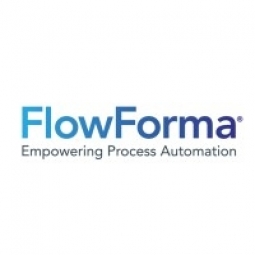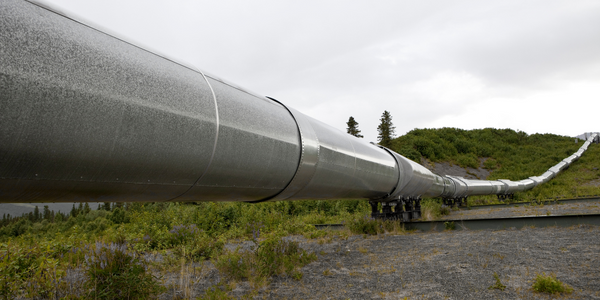公司规模
SME
地区
- Europe
国家
- United Kingdom
产品
- FlowForma Process Automation
技术栈
- Microsoft 365
- SharePoint
实施规模
- Enterprise-wide Deployment
影响指标
- Productivity Improvements
- Cost Savings
- Customer Satisfaction
技术
- 平台即服务 (PaaS) - 应用开发平台
适用行业
- 石油和天然气
- 医疗保健和医院
适用功能
- 商业运营
- 质量保证
用例
- 过程控制与优化
- 预测性维护
- 库存管理
服务
- 云规划/设计/实施服务
- 系统集成
关于客户
总部位于苏格兰的阿伯丁辐射防护服务公司 (ARPS) 是一家受益于北海石油和天然气行业的企业。该公司提供辐射防护服务,包括污染测量仪和泄漏测试设备,用于测量钻井平台上的放射性副产品。其他客户包括废物管理和医疗保健部门,但该公司已通过与远至中东和西非的能源公司合作走向全球。快速增长促使 ARPS 重新审视现有流程并寻求更高的效率。至关重要的是,该公司的 70 台仪表必须每年由第三方重新校准,以确保它们符合规定并适合用途。
挑战
阿伯丁辐射防护服务公司 (ARPS) 面临着纸质流程的挑战,这些流程容易出错且效率低下。该公司的 70 台仪表必须每年由第三方重新校准,以确保它们符合要求并适合用途。跟踪和带设备进行年度测试的过程主要基于纸张,使用活页夹详细记录哪个仪表在哪个设备上。如果项目延长,通常会添加潦草的笔记,这很容易出错。更糟糕的是,价值 2,000 至 5,000 英镑的仪表偶尔会丢失。Excel® 电子表格通过电子邮件与客户共享,但没有中央存储库,因此很难找到和访问最新信息。这正在成为一个问题并影响收入。ARPS 知道它需要改进其流程,并最初寻找文档管理系统。
解决方案
ARPS 选择了 Microsoft 365 和 SharePoint,因为他们意识到,对于需要随时随地访问文档的环球员工来说,基于云的软件是完美的选择。FlowForma 的苏格兰专业合作伙伴 Appetite for Business 建议在 SharePoint 上部署 FlowForma® Process Automation,将低效的纸质记录转变为无缝的工作流程,于是 FlowForma 应运而生。不到一年,FlowForma Process Automation 就成为了该企业的核心应用程序。重新校准过程的每个部分都在 FlowForma Process Automation 中设置,使企业能够通过一个窗口全面了解每个仪表的生命周期。在此过程中,会生成带有正确海关代码的离岸运输运输文件,以及用于将设备调度到钻井平台或重新校准公司的打印标签。该公司还为客户进行擦拭测试,从世界各地的站点带回特殊擦拭布并进行放射性分析。如果擦拭布干净,则该站点通过测试并颁发证书。该过程严重依赖 Microsoft Word 文档和 Excel 电子表格,因此需要迁移另一个流程。站点清理完毕后,签名的 PDF 证书将通过电子邮件直接发回客户,所有信息均由 FlowForma 流程自动化生成。
运营影响
数量效益

Case Study missing?
Start adding your own!
Register with your work email and create a new case study profile for your business.
相关案例.

Case Study
Taking Oil and Gas Exploration to the Next Level
DownUnder GeoSolutions (DUG) wanted to increase computing performance by 5 to 10 times to improve seismic processing. The solution must build on current architecture software investments without sacrificing existing software and scale computing without scaling IT infrastructure costs.

Case Study
Remote Wellhead Monitoring
Each wellhead was equipped with various sensors and meters that needed to be monitored and controlled from a central HMI, often miles away from the assets in the field. Redundant solar and wind generators were installed at each wellhead to support the electrical needs of the pumpstations, temperature meters, cameras, and cellular modules. In addition to asset management and remote control capabilities, data logging for remote surveillance and alarm notifications was a key demand from the customer. Terra Ferma’s solution needed to be power efficient, reliable, and capable of supporting high-bandwidth data-feeds. They needed a multi-link cellular connection to a central server that sustained reliable and redundant monitoring and control of flow meters, temperature sensors, power supply, and event-logging; including video and image files. This open-standard network needed to interface with the existing SCADA and proprietary network management software.

Case Study
Refinery Saves Over $700,000 with Smart Wireless
One of the largest petroleum refineries in the world is equipped to refine various types of crude oil and manufacture various grades of fuel from motor gasoline to Aviation Turbine Fuel. Due to wear and tear, eight hydrogen valves in each refinery were leaking, and each cost $1800 per ton of hydrogen vented. The plant also had leakage on nearly 30 flare control hydrocarbon valves. The refinery wanted a continuous, online monitoring system that could catch leaks early, minimize hydrogen and hydrocarbon production losses, and improve safety for maintenance.

Case Study
Hospital Inventory Management
The hospital supply chain team is responsible for ensuring that the right medical supplies are readily available to clinicians when and where needed, and to do so in the most efficient manner possible. However, many of the systems and processes in use at the cancer center for supply chain management were not best suited to support these goals. Barcoding technology, a commonly used method for inventory management of medical supplies, is labor intensive, time consuming, does not provide real-time visibility into inventory levels and can be prone to error. Consequently, the lack of accurate and real-time visibility into inventory levels across multiple supply rooms in multiple hospital facilities creates additional inefficiency in the system causing over-ordering, hoarding, and wasted supplies. Other sources of waste and cost were also identified as candidates for improvement. Existing systems and processes did not provide adequate security for high-cost inventory within the hospital, which was another driver of cost. A lack of visibility into expiration dates for supplies resulted in supplies being wasted due to past expiry dates. Storage of supplies was also a key consideration given the location of the cancer center’s facilities in a dense urban setting, where space is always at a premium. In order to address the challenges outlined above, the hospital sought a solution that would provide real-time inventory information with high levels of accuracy, reduce the level of manual effort required and enable data driven decision making to ensure that the right supplies were readily available to clinicians in the right location at the right time.









